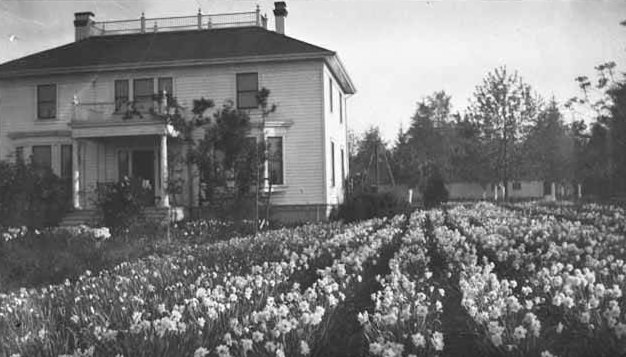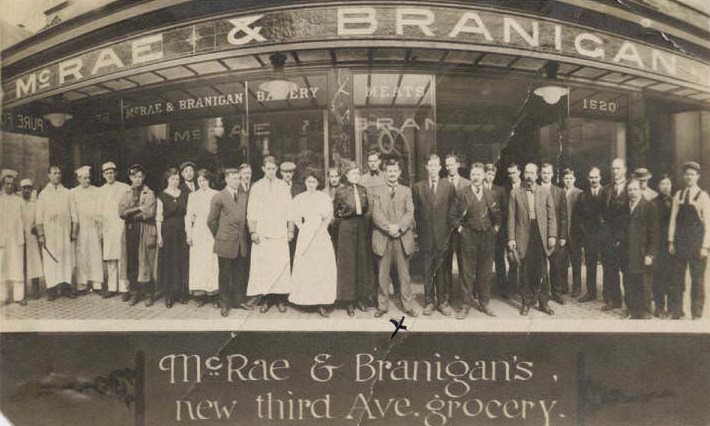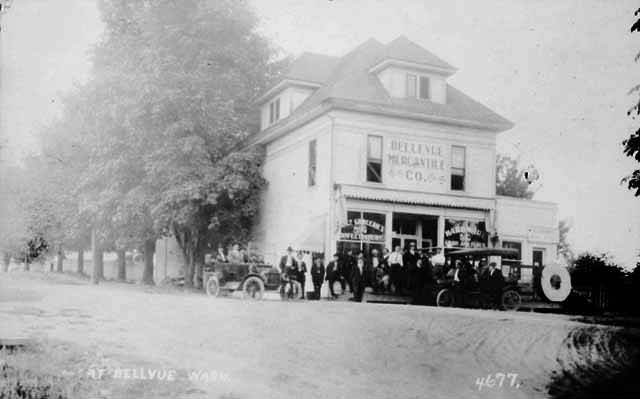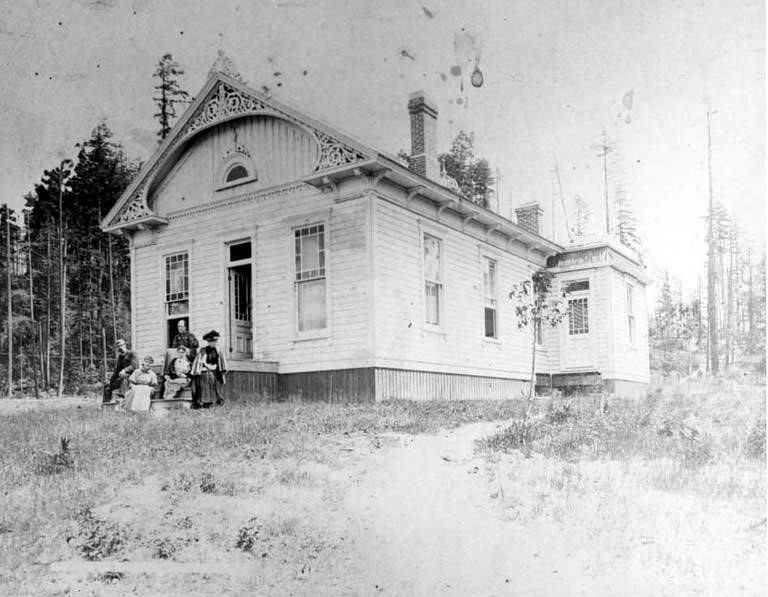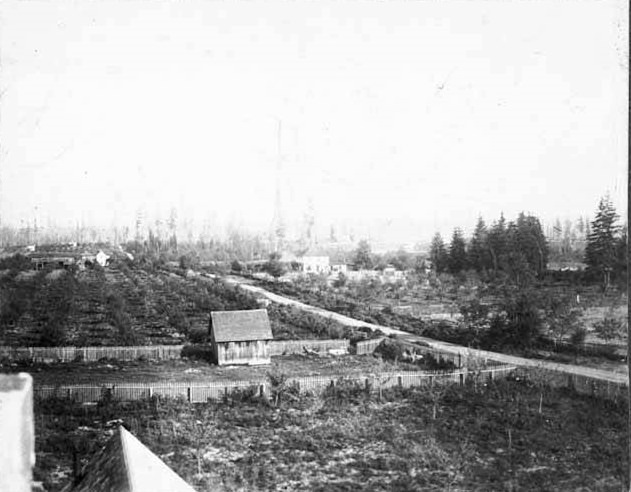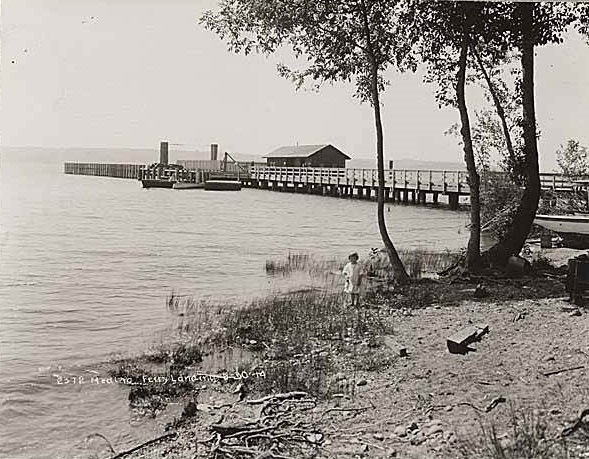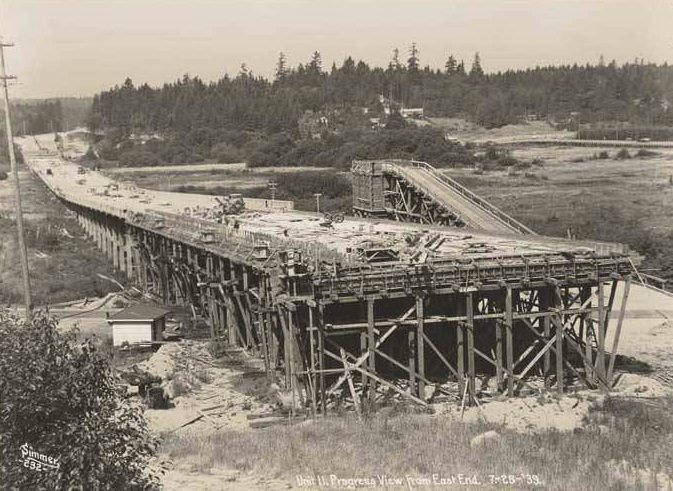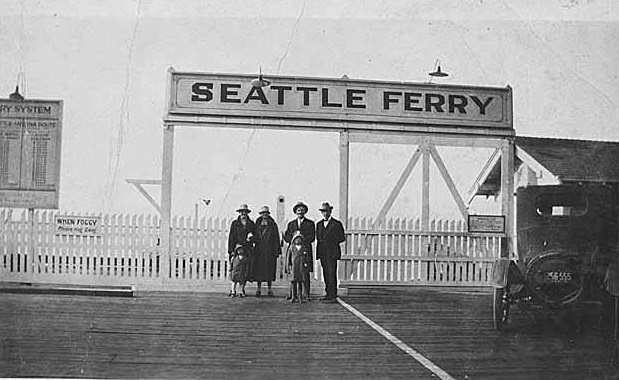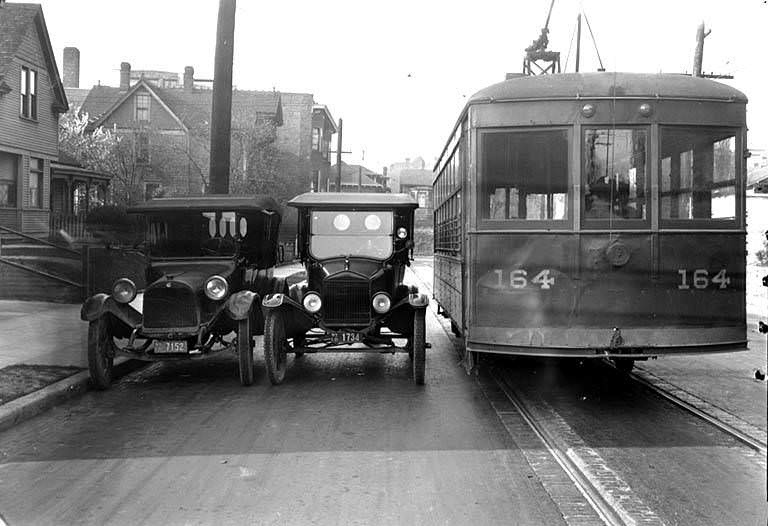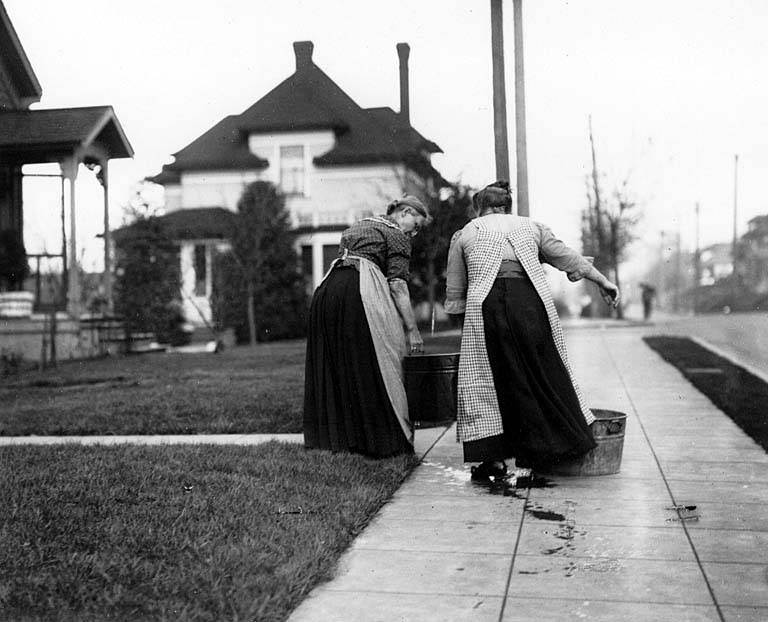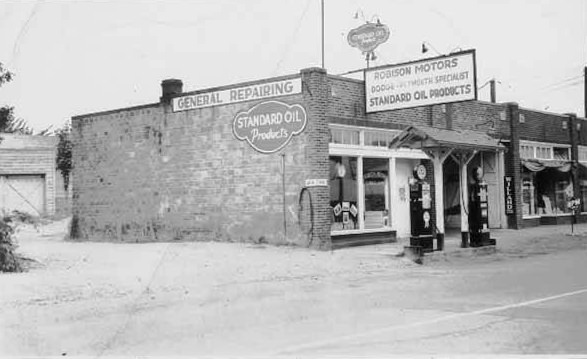The first European Americans to settle in Bellevue were William Meydenbauer and Aaron Mercer, who claimed homestead tracts several miles apart. Neither remained permanently, and the first permanent settlers arrived in 1879. There was already a community consisting primarily of logging homesteaders by 1882. During the early 20th century, Japanese immigrants worked on the land to gradually clear it to support small-scale farming on leased land plots.
Bellevue had about 400 full-time residents by 1900. With the arrival of phone service in 1907 and mercantile stores in Medina and Bellevue, civilization began to surface. In 1913, car ferry services started aboard the Leschi. The bus left the Leschi dock in Seattle every 15 minutes and stopped at Medina and Meydenbauer Bay.
In 1920, the census showed about 1,500 residents in Bellevue and its surrounding communities. In 1919, the American Pacific Whaling Company moved its headquarters to Bellevue, wintering its boats in Meydenbauer Bay. The first Strawberry Festival was held in 1925 and drew 3,000 people, primarily from across the lake. This festival became an annual event, and Bellevue became a peaceful, pleasant farming town.
Below are some stunning historical photos that show Bellevue from the 1900s to the 1940s.
#1 Intersection of Bellevue Way and NE 8th, 1937.
#2 Congregation outside Sacred Heart Church, Bellevue, 1927

Bellevue's first Catholic church was established as a mission associated with Kirkland's Holy Family parish. Its first services were held in the parlor of the Downey family home. In 1913 the congregation moved into a small wooden building on Main Street near 108th Avenue NE. The brick building seen in this image was built in 1926; it later housed the Bellevue public library after the congregation outgrew the space.
#3 Aerial of NE 8th Street & Bellevue Way, Bellevue, 1937
#4 Winters House, Bellevue, 1935
#5 The old Bellevue schoolhouse, 1909.
#6 View north up today’s Bellevue Way from Main, 1928.
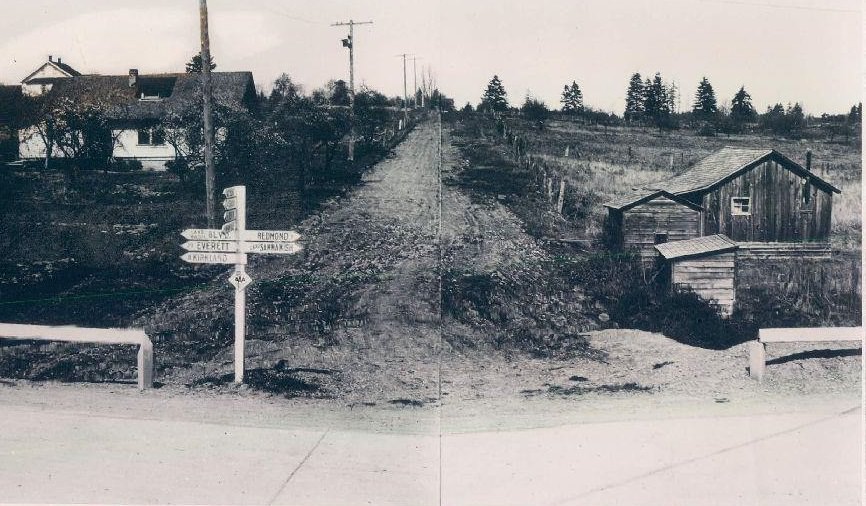
At that time Bellevue Way was called Peach St. The route to Kirkland and communities north was through Medina via the concrete slab road. It came through Medina, around Clyde Hill, past the points, roughly parallel to today's 520, and then connected with today's Lk Wash Blvd at the Northup/Houghton area.
#7 Hunt’s Point Road, 1937.
#8 Viewing north, the road would later become Bellevue Way at about where Bel Square stands today, 1900
#9 Baker house flower garden, Bellevue, 1912
#10 Baker House, Bellevue, 1912
#11 Baker House, Bellevue, 1912
#12 Beaux Arts Village gazebo on bridge, 1910
#13 Bellevue ferry dock, Bellevue, 1910
#14 Bellevue Ferry Landing, Meydenbauer Bay, Washington, May 30, 1914.
#15 Bellevue Grade School basketball team, Bellevue, 1928
#16 Bellevue School, 1900

Bellevue School, on Main Street in Bellevue, Washington was built in 1892 after the city passed its first school levy. Students entered the school building at one corner, under the ornate bell tower. This photo shows the schoolhouse with a group of students gathered on the steps. Bellevue School was also known as Main Street School.
#17 Climie Hill on beach at Meydenbauer Bay, Bellevue, 1920
#18 Daniel and Sarah Jane Whitney on their farm, Bellevue, 1900
#19 Delbert Hutchison and John Viehmann, Bellevue, 1938
#20 Employees posing outside McRae & Branigan grocery, Bellevue, 1910
#21 Midlakes Grain and Feed Store, Bellevue, 1914
#22 Mina Mary Schafer outside Jane McDowell’s Candies, Bellevue, 1934

During the 1930s, Bellevue resident Mina Schafer entered the candy business. She was known for her delicious candies and she did a great deal of experimenting until she produced the product that she wanted. Her husband, Louis, built the cottage shop which she named for her mother, Jenny (Jane) McDowell. (In the late 1800s her mother changed her name to Jenny because the name Jane had the connotation of a "loose" woman.) The shop was connected to the house by a bell system so that when a customer entered the shop Mrs. Schafer was alerted by the bell and could run down to the shop to wait on her customer.
#23 View of Medina, 1916
#24 Bellevue School interior, 1909.
#25 Bellevue Garage, 1915.
#26 Addie Hurley and Gladys Younger in Charley Younger’s Candy Shop, Bellevue, 1930
#27 Albert S. Burrows house, Bellevue, 1900
#28 Alfred Renfro, Jr. playing in snow at Beaux Arts Village, 1910
#29 Baker house and outbuildings, Bellevue, 1913
#30 Bell’s Hotel, 1900
#31 Bellevue Ave., looking north from about Olive Way 1931
#32 Bellevue Garage, Bellevue, 1915
#33 Bellevue Garage, Bellevue, 1925.
#34 Bellevue Grade School building under construction, Bellevue, 1920
#35 Bellevue Mercantile Co., Bellevue, 1917
#36 Boat dock, Bellevue, 1908
#37 Burrows family gathered on the front porch of their house, Killarney (now Bellevue), 1880
#38 Businesses and apartments at E. Pike St. southeast corner of Bellevue Ave. E., Seattle, Washington, May 15, 1909.
#39 East Channel Bridge, Bellevue, 1939
#40 Entrance to ferry dock, Bellevue, 1915
#41 Farm and residence near Bellevue, 1915
#42 Farmland and road near Bellevue, 1915
#43 George Hanson residence, Bellevue, 1925
#44 Godsey home, Bellevue, 1910
#45 Grace Hill outside chicken coop, Bellevue, 1912
#46 Highland Dairy Farm truck, Bellevue, 1900s
#47 Highland School, Highland, 1910
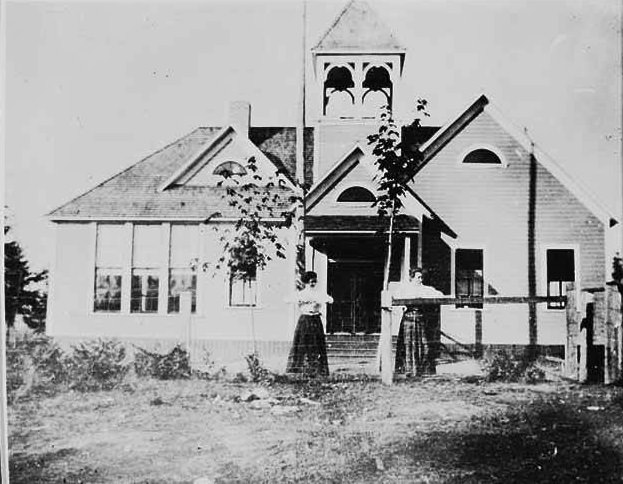
The school was built in 1887 and used until 1934, when the new Highland School opened. It was later used as a home, offices, and a floor covering business. It was moved in 1972 to make way for State Route 520. The building was destroyed by a fire in 2001. The bell is now housed at Stevenson Elementary in Bellevue.
#48 Houses and farms, Bellevue, 1900
#49 Log cabin in the snow, Bellevue, Washington,1905
#50 Main house, Bellevue Farm near American Camp, San Juan Island, 1910s
#51 Main Street School, Bellevue, Washington, 1920

Bellevue School, also called the Main Street School, opened in 1892. By 1912, the size of the schoolhouse doubled to accommodate the growing population. Although teachers taught some high school classes in Bellevue beginning in 1910, many of the city's early high school students had to travel to Seattle to complete their education.
#52 Medina ferry dock, Medina, 1925
#53 Medina ferry dock, Medina, May 30, 1914
#54 Mercer Slough bridge construction, July 28, 1939
#55 Navy personnel at Naval Training Station, Seattle, 1918

During World War I a temporary Naval Training Station was set up on the University of Washington campus, near where the university's health sciences center is now located. The training camp was active from 1917-1919, during which time over 5,000 mostly college students were trained for both naval and naval aviation units.
#56 Northwest corner Bellevue Ave. E. and Pike St., Seattle, Washington, May 15, 1909
#57 Outbuildings at Bellevue Farm near American Camp, San Juan Island, 1910s
#58 Panoramic view in vicinity of Bellevue, 1915
#59 People posing with Seattle Ferry sign on Medina ferry dock, Medina, 1925
#60 Kelfner Fruit and Vegetable Stand, Bellevue, 1920s

The owners of this stand, John and Frances Kelfner, settled in Bellevue in 1911. They specialized in growing Island Belle grapes. These grapes were developed by Lambert Evans at his Stretch Island vineyard. The grape became the most commonly grown in the Puget Sound region. In fact, in 1918 the Island Belle Grape Growers' Union was formed to help market the grapes.
#61 Roundcliffe Apartments on Bellevue Ct. E., 1925
#62 School in Bellevue, Washington, 1909
#63 Seattle Municipal Railway trolley looking north on Bellevue Ave. just south of Denny Way, 1921
#64 Students on steps of Bellevue School, Bellevue, 1912
#65 Students on steps of Bellevue School, Bellevue, 1900
#66 Swedish Tabernacle, Seattle, 1925
#67 Truck delivering water on Bellevue Avenue, Seattle, 1911
#68 Two women carrying buckets of water from the relief wagon, Bellevue Ave., during the water shortage of November 21, 1911.
#69 Wagon load of lettuce on Aries farm, Bellevue, 1918
#70 Walt Robison Motors, Bellevue, 1930
#71 Whaleboats at Bellevue, 1920

From the 1920s to 1940, the ships of the American Pacific Whaling Company wintered in Bellevue, Washington. While there, the company made repairs to the ships and equipment and got them ready for the next Alaska whaling season. In 1940, the docks were turned over to the United States Coast Guard for a repair base.
#72 William Cruse on sidewalk with hose, Bellevue, 1915
#73 William L. Rhodes home on Capitol Hill, 1909
#74 William T. Ivey residence, Bellevue, 1910
#75 Women and children wading in Meydenbauer Bay, Bellevue, 1912
#76 Ferry Leschi at Bellevue ferry dock with the Triton approaching, Bellevue, 1917

First Covenant Church in Seattle began as a small group of Swedish immigrants who found other like-minded Swedes and formed the Swedish Christian Mission in early 1889. The Great Fire of June 1889 briefly stalled plans to build a church building, and the first church building was dedicated in May of 1891, at Ninth Avenue and Stewart Street. The congregation grew quickly and a new, larger building was constructed in 1910-11 for the more than 2000 Swedish immigrants who regularly attended services.
#77 New home of Benson Northup nearing completion, 1889

In 1889, the Benson Northup family left their old log home and moved to a new house in the Houghton area, north of Bellevue and now part of Kirkland. Seattle photographer David R. Judkins photographed them on the porch of their nearly completed home. The house has Italianate touches, with a cupola, low-pitched roof, and brackets under the roof eaves. It also has scrollwork brackets on the porch.








